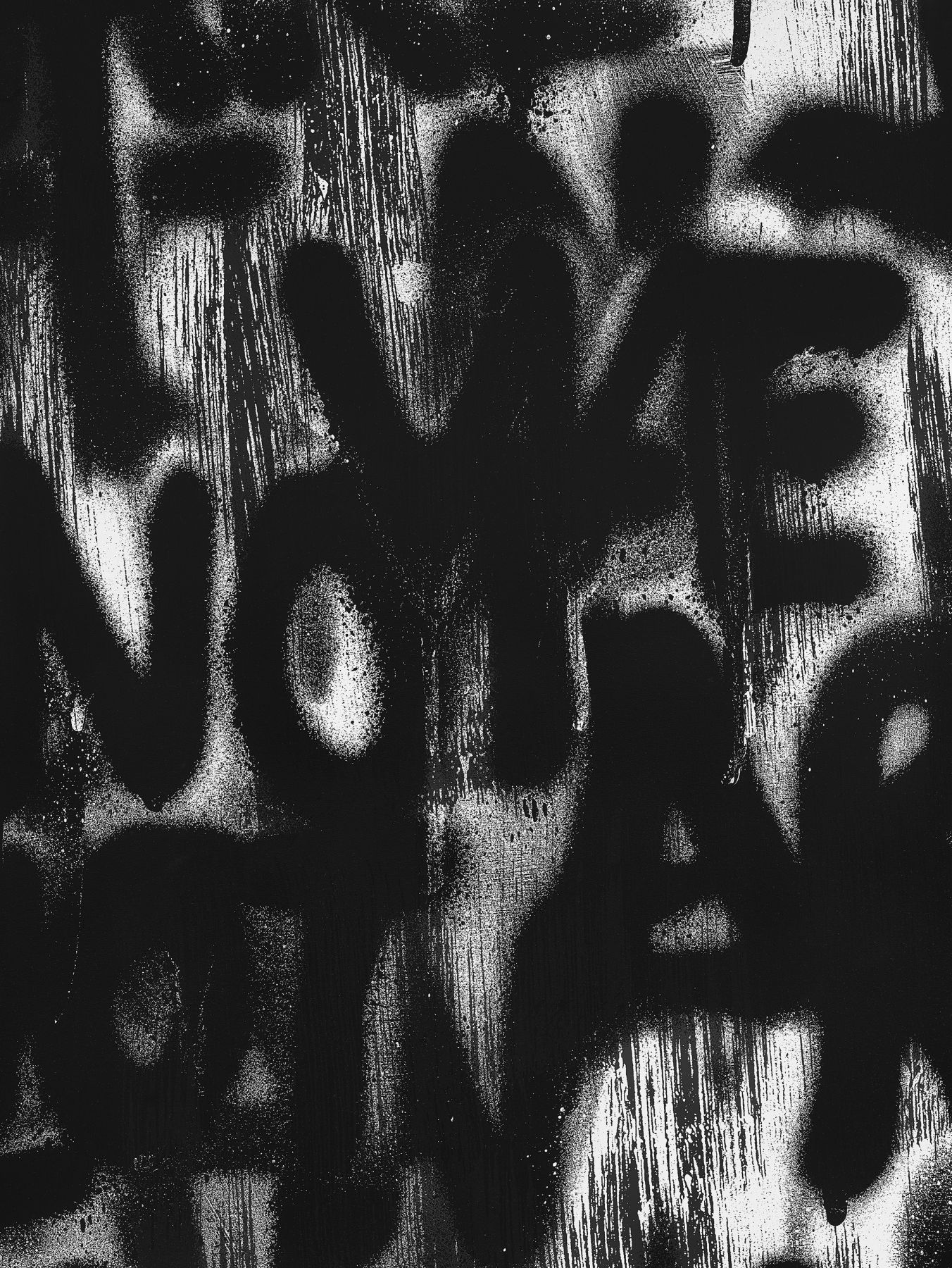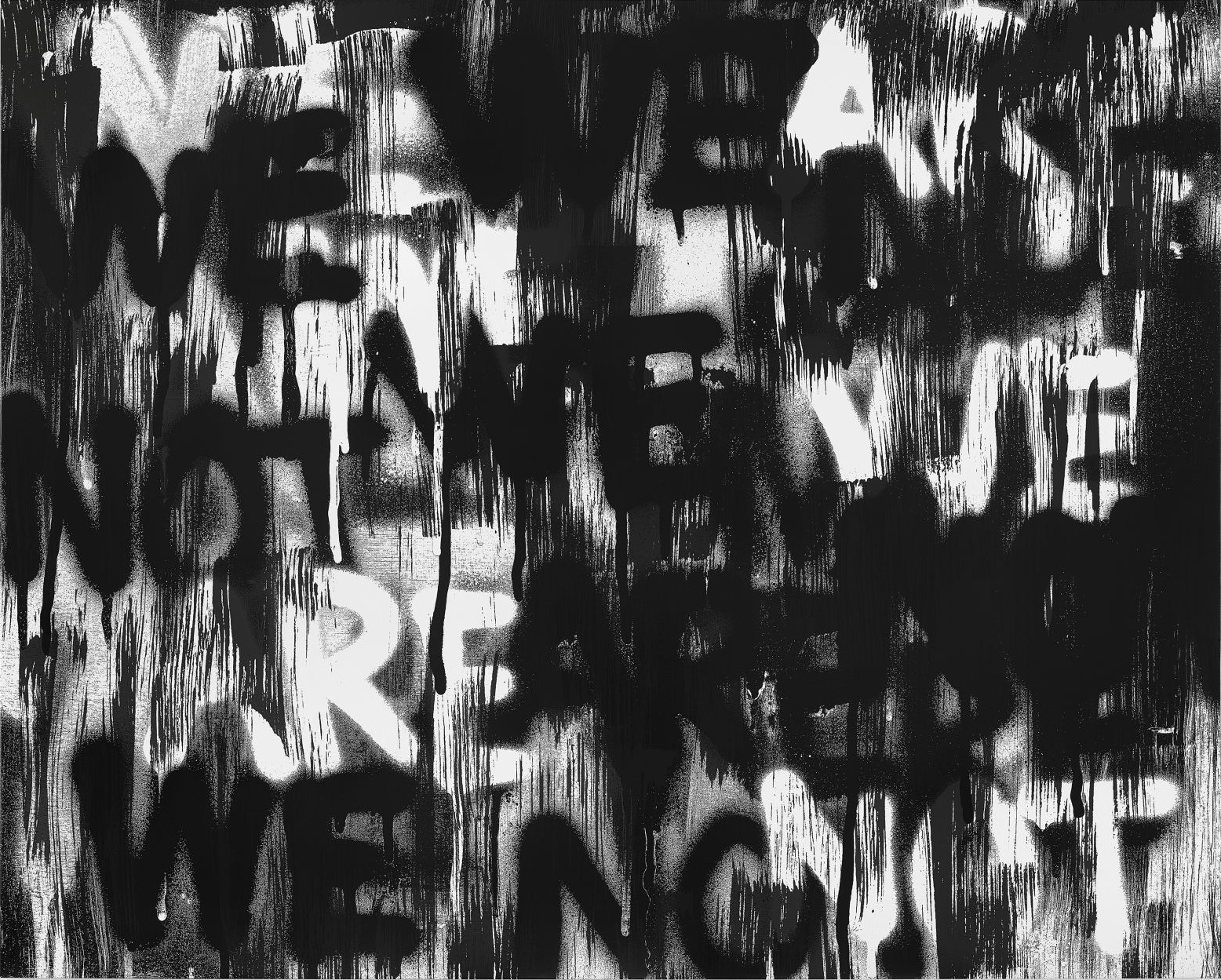Adam Pendleton’s first solo exhibition at David Kordansky Gallery unfolds across three exhibition spaces and invites viewers to engage with the different aspects of his unusual and critical practice. Large black-and-white paintings with the repeated phrase “WE ARE NOT,” hang in one large space. In the smaller rear gallery behind it, Pendleton exhibits grids of framed collages on mylar. Finally, in a custom-built tall screening room designed for a vertically-formatted projection, he presents What Is Your Name? Kyle Abraham, A Portrait, (2018–19), a 19-minute video about the dancer Kyle Abraham.
Pendleton’s paintings are powerful and direct as well as poetic, expressive and gestural. He begins with a fragment of a phrase that is often selected from a historical treatise or speech, like those by Malcolm X, and explores in a Dadaist manner, the representation of the words through the fracturing and recombining of the phrase. Through successive layering of “we,” “are” and “not” spray-painted over and over again in multiple sizes, tones of black and white, and opacities, he creates a symphonic rhythm of words that suggest different implications and meanings depending on what order they are read in.

Adam Pendleton, Untitled (WE ARE NOT), 2020. Courtesy David Kordansky Gallery.
The paintings begin to make even more sense when seen in conjunction with Pendleton’s mylar collages. Presented as large grids of between 15 and 36 works, these pieces are filled with appropriated images and texts culled from art historical and political sources obscured with handwritten marks and gestural erasures. Their graphic quality reiterates the urgency of their collective message. The subtext in all of Pendelton’s work is an exploration of issues of race as well as the relationships between blackness and abstraction. Pendleton melds together numerous voices and image fragments, choreographing them into quasi-narratives that weave through time to elucidate and challenge racial biases. The overall effect is intentionally didactic and bombastic. Pendleton has something to say and says it loudly. Though not subtle, the works are never preachy but Pendleton is interested in exposing as well as educating. The works become a conversation between past and present, maker and viewer.
Taking the idea of conversation further, Pendleton also presents a short video in an enclosed screening room where he interviews the dancer Kyle Abraham as he twirls and reflects on Pendleton’s questions. Though Pendleton is never seen, the video unfolds as a conversation that ebbs and flows like a dance. It eventually splits, dividing the screen vertically in thirds, presenting Abraham’s fragmented body out of sequence. At first, the video seems disconnected from the collages and paintings, but as the third in a series of video portraits presented in the context of his static work, it becomes clear that this medium allows Pendleton to create moving paintings that sequence actions and words. The spoken texts expand upon his explorations of time and memory, but more importantly, give presence to the Black body that is alluded to in the other works.



















0 Comments